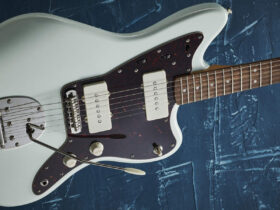Technology has reinvented the way we interact with the world and will continue doing so as we move through time. In the world of architecture, creativity and technical skills are essential, which is why professionals need to stay updated on the latest gadgets in their field; we’ve moved beyond hand-drawn designs. Throughout this article, you will find a great selection of essential architectural gadgets.
Graphic design is the backbone of architecture, so it’s only fitting that a quality drawing tablet comes top of the list. The majority of graphic tablets come with a handy stylus, and will easily connect to one of these Lenovo Architect Desktops via Bluetooth or USB. The portability of graphic tablets means you can turn any computer into a sheet of paper, so you can design on the go.
A traditional tape measure will do the trick, but a laser tape measure makes life so much easier. Measurements on building designs need to be accurate to decimal places, which is where this gadget comes in handy. Without getting too technical, this gadget works by sending a beam of light and measuring the time taken for the light to return. The average laser tape measure can deal with dimensions of around 200m, which easily eclipses the traditional version.
Architects need to capture photos of buildings in their truest form, which the average camera phone doesn’t deliver on. Therefore, an attachment lens is essential and is much more convenient than carrying a bulky DSLR camera. By using the attachment, pictures will be clearer, and the frame will be much wider, meaning you can get your architect wherever you are.
Architects work with a variety of people and need to demonstrate design progress at any given moment, which is why a pocket projector is their best friend. These gadgets plug in through USB or HDMI, whether that be into a smartphone or laptop, meaning they’re always ready to show off their work.
3D pens have been around since 2012, but they’ve only recently started seeing commercial success. Therefore, architects are still adjusting to them, as they feel like a toy. However, the practicalities are enormous because it lets people create 3D designs without the need for an enormous printer. Further, it encourages architect students to think in 3D, while keeping investment relatively low.
Virtual reality (VR) has been gaining plenty of traction in recent years and has breathed a new lease of life into architecture. Through advances in the VR field, architects can show clients a true representation of their work by allowing them to walk through projects in real-time. Although high-quality VR goggles are expensive, there are plenty of budget headsets that make for a worthy investment.
The essence of architecture is in design and creativity, but technology is playing a larger part than ever before. Therefore, architects need to keep updated with the latest gadgets, which can be explored above.







